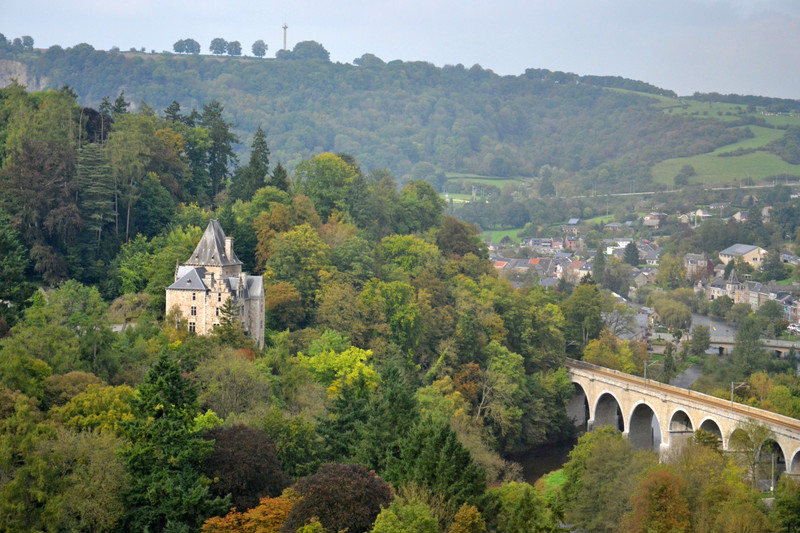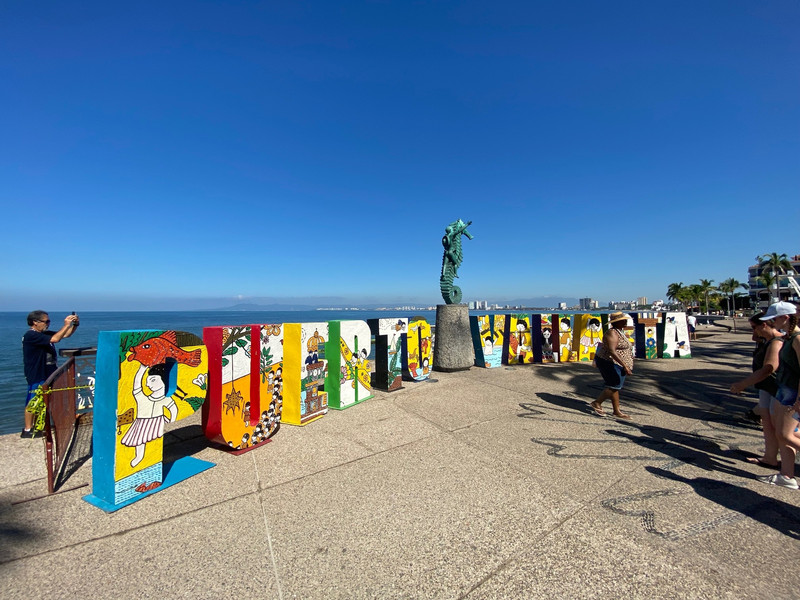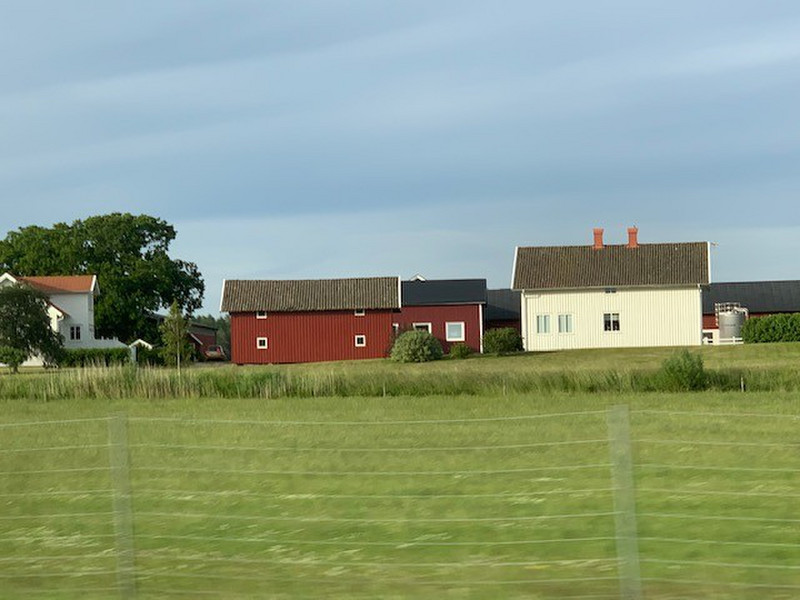Chteau de Montjardin in the Ardennes. The castle dates from the 16th century and was enlarged in the 19th century. The railway viaduct crosses the Amblve River. DSC_0217p1
Between Maastricht and Bastogne, we traveled through the Ardennes region of Belgium. The Ardennes is a hilly region of thick forests and was the scene of heavy fighting in World War I and World War II. In August 1914, the German army advanced into Belgium though the unexpected move owing to the forests and that Belgium was officially a neutral nation. In December 1945, the Battle of the Bulge was a surprise German counteroffensive through the forests in winter weather. Today the forests remain in this rural part of Belgium, often obscuring views from the A26 Autoroute.
Bastogne, Belgium, is a quiet town today. Historically, it has been a prosperous market town deriving its from dairy and forest products from the Ardennes. But it has been the nexus of conflict in both World War I and World War II. In World War I, it lay directly in the path of the German attack though Belgium at the onset of the war. Bastogne was occupied again from 1940 to 1944 during World War II. Liberated in September 1944, it was once more attacked in December 1944 during the Battle of the Bulge. The town was under siege as
Voie de la Libert. Marker (borne) at Bastogne, km 1147. Bastogne is the terminus of the Liberty Road (Voie de la Libert) the Allied advance from the Normandy beaches to the Rhine. Bornes are placed each kilometer. DSC_0245
Germany attempted a surprise winter counteroffensive. The counteroffensive, known as the Battle of the Bulge, saw the town once again caught up in conflict. The US 101st Airborne was stationed in Bastogne and defended the town during the December siege. The arrival of the US Third Army at the end of December countered the German advance.Numerous memorials are seen in Bastogne today, reminders of the conflicts. Bastogne is the terminus of the Liberty Road (Voie de la Libert) the Allied advance from the Normandy beaches to the Rhine. Bastogne is the location of the Mardasson Memorial to American soldiers killed during the Battle of the Bulge. The Bastogne War Museum has recently opened adjacent to the memorial. The museum and memorial were places we wanted to stop to see. (My father served in the US Armys 507th Parachute Infantry Regiment during the Battle of the Bulge.)
The Bastogne War Museum opened in 2014. It is an interpretive center that tells the story of World War II and the Battle of the Bulge (16 Dec 1944 to 25 Jan 1945) from the point of view of both soldiers and civilians. it is more than a military museum. Events
leading to World War II are examined. Once war began, the impact of conflict on the daily lives of Belgians is recounted. Some fled. Some joined the Resistance. Others collaborated or just tried to get by as best they could. The museum is very well done with many interactive exhibits. Visitors may follow the path of an American soldier, a German soldier, a Belgian teacher or a Belgian school student through the conflict.
The road leading from town to the museum and Mardasson Memorial is lined with both Voie de la Libert bornes and Belgian war memorials.









